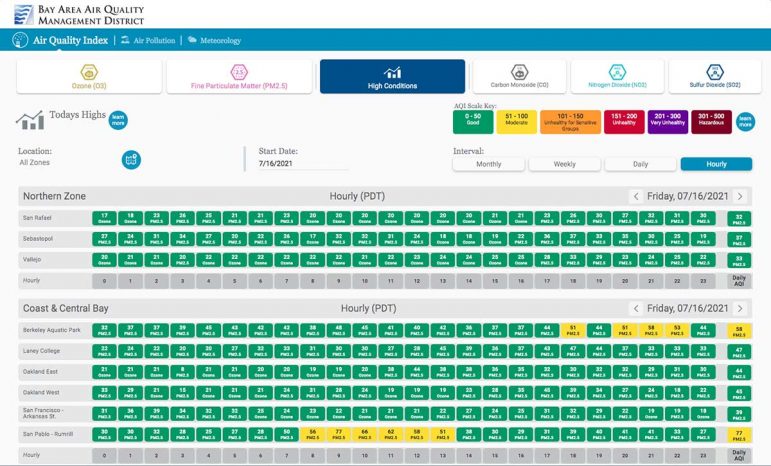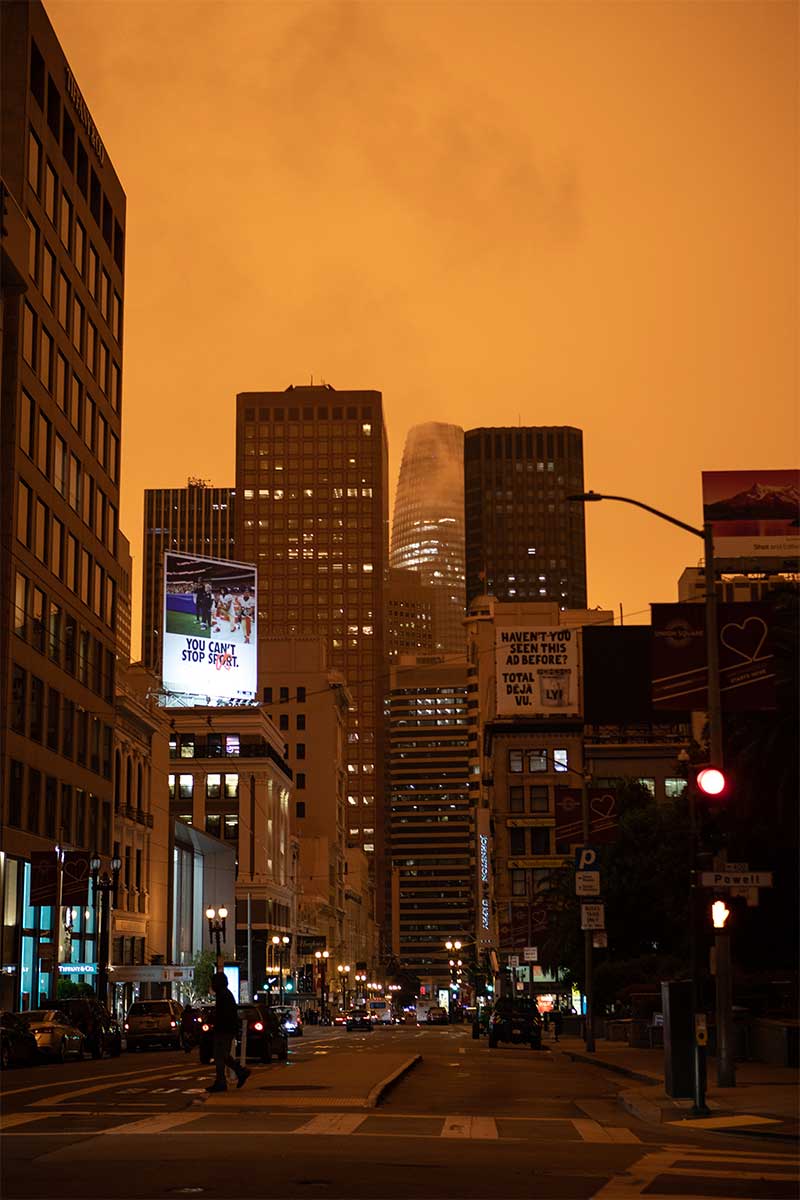With hotter, drier temperatures and an anticipated increase in wildfires, the Bay Area is bound to have some unhealthy air quality this summer.
So, what are the best ways to prepare and keep yourself safe?
Juan Romero, spokesperson for the Bay Area Air Quality Management District, said the first thing to do is check the air quality levels, especially if there is a wildfire in the area.
“Looks can be deceiving,” Romero said.
Even if the air seems clear, it can contain enough smog or particulate matter that makes it unhealthy to breathe.
The air district has more than 30 air monitoring sites throughout the Bay Area that provide more focused readings of air quality and can be found online.

Other unofficial sources, like Purple Air, can provide important real-time information on air quality but low-cost sensor readings often run several times higher than the air district’s U.S. Environmental Protection Agency-certified air monitors, according to Romero.
He said it is best to use the air district’s readings because their monitors “meet stringent EPA requirements for regional air quality monitoring and are located, designed and operated to ensure that air quality data is consistent and accurate.”
Healthy air quality falls into the 0-50 range, which is what the Bay Area typically experiences on a day-to-day basis.
Masks won’t protect you
But if there is enough smog or particulate matter and the range goes above 50, Romero advises residents to stay inside — and take their pets with them.

“Masks are not a substitute for staying indoors,” Romero said.
He said only a gas mask could really be able to prevent particulate matter from seeping through the mask. Even the N95 masks, which were recommended by many health officials to protect from COVID-19, are not effective enough to block out extremely small pollutants.
Still, Romero said, if someone must go outside it is better to wear an N95 mask than nothing at all.
To ensure air quality stays healthy indoors, Romero suggested residents purchase non-ozone producing air purifiers as well.
The air district also recommends that residents replace or refurbish old leaky windows and doors and use caulking to seal the openings.
Another way to make sure unhealthy air is kept outside is to upgrade to an HVAC system that allows for both heating and cooling and has the mechanism to switch to recirculate so new air does not enter.
Residents who do not want to upgrade their HVAC system can also purchase a MERV 13 or greater filter for the HVAC system.
Take advantage of public spaces
If none of those options are plausible, the air district recommends that residents go to public spaces that do have cleaner filtered air like indoor shopping malls, cooling centers, community centers and local government buildings, for example.
Romero said this is especially important for children, elderly residents, pregnant people and those with asthma or other respiratory conditions as poor air quality can result in serious health impacts.
He said smog, which mostly comes from cars and other mobile sources like planes, could at the least irritate the respiratory system, eyes, nose and throat and cause coughing and headaches.
At its worst, unhealthy smog levels could also reduce lung function or even damage the lining of the lungs.
“It’s like sunburn on your lungs!” Romero wrote in a recent Q&A session with Local News Matters.
Particulate matter, which often is produced from burning wood, could cause “lung irritation, aggravate the severity of chronic lung disease, (and) cause changes in blood chemistry that can result in clots that lead to heart attacks among other things,” Romero said.

“Both (smog and particulate matter) can cause things like developmental harm, exacerbate existing respiratory conditions and cause premature death,” he continued.
Avoid bad habits
Romero also advised that residents follow Spare the Air protocols, especially since most pollutants are human-caused and avoidable.
When a Spare the Air alert is issued because of excessive levels of fine particulate matter, it is illegal to burn wood, fire logs, pellets, or other solid fuels in fireplaces, wood stoves, outdoor fire pits, and other wood-burning devices, according to the air district. These types of alerts are usually issued in the winter or in the event of a wildfire.
Everyday behaviors that residents could do to lessen pollution are to use public transit, carpool or bike. This is especially important on Spare the Air days issued for smog because the hot temperatures trap smog emitted from cars closer to the ground.
Bay Area residents can sign up for air quality alerts by texting the word “START” to 817-57 for text alerts or register online to receive phone or email alerts.
The air district offers a flier with more tips on how to stay safe during an unhealthy air quality event.
